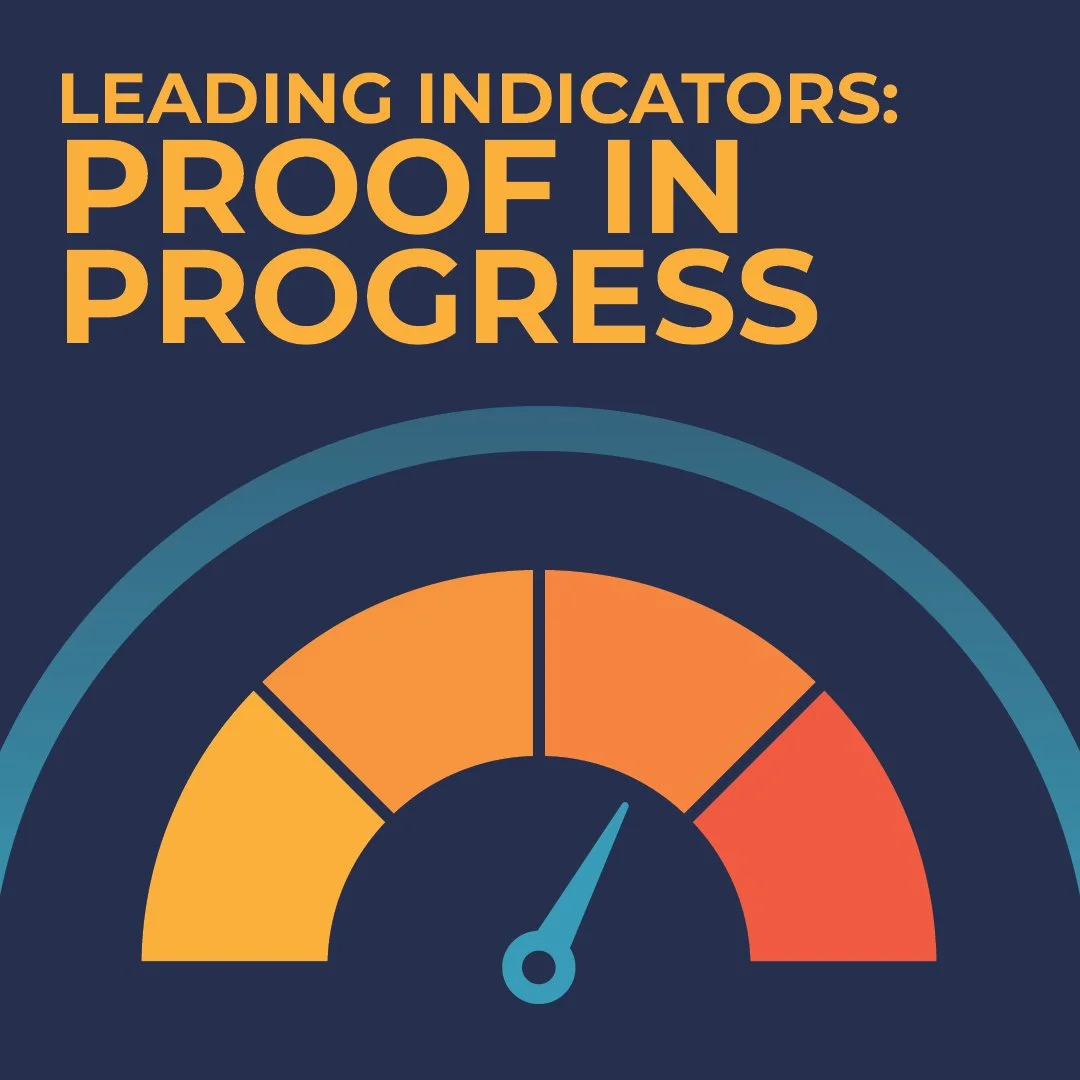Leading Indicators: Proof in Progress
Written by Sarah Spatafora, Media Director
October 22, 2025
In this series, we've argued that marketing ROI should function less like a rearview mirror and more like a GPS, and we’ve shown you how to build your GPS satellite network by connecting your data systems.
But what makes a GPS truly powerful is its ability to guide you in real time, showing whether you’re on the right road while you're still in motion. The key to achieving this in marketing is understanding one critical distinction: the difference between lagging and leading indicators.
Lagging Indicators: Show Proof, But Often Too Late
Lagging indicators are the final, long-term outcomes that measure ultimate success. They are the "proof" that your journey is complete. They’re the metrics that make leadership teams nod in approval and renew budgets and contracts. Things like:
Enrollments for a university
Applications or hires for a workforce development program
Membership renewals or donations for a non-profit
These numbers are essential for demonstrating ROI to leadership, but they have one fatal flaw: they often arrive months after a campaign ends. By the time you see them, the budget has been spent, the creative is retired, and the chance to optimize has passed. If performance was disappointing, there’s nothing that can be fixed.
Leading Indicators: Your Real-Time Compass
Leading indicators are different. These are the early-warning signals that tell you if you're on the right path. They are the "guidance" you need to course-correct in real time. These are metrics like:
Inquiries or form fills
Event registrations
Webinar sign-ups
Downloads of a guide or whitepaper
Content engagement (e.g., time spent on page for key blog posts)
These signals tell you that your investments are working weeks or even months before the final results appear. More importantly, they give you time to act.
Choosing the Right Signals for Your Mission
The leading indicators that you should focus on depend entirely on what you’re trying to achieve. Every organization’s journey is different. A recruitment campaign has different leading indicators than a higher education enrollment drive, which looks nothing like a long-term membership program.
For a university, early indicators might be campus visit sign-ups and inquiries. A sudden drop in visits after a campaign launch could signal a messaging problem. You may be attracting interest, but the wrong kind.
For a membership organization, a key leading indicator might be a surge in new email list sign-ups from a social media campaign, which demonstrates that you’re building an engaged audience versus just driving vanity clicks. A drop in those sign-ups could indicate a need to adjust your ad creative or targeting.
For a workforce program, high-performing blog content or webinar registrations can signal that you're attracting the right talent early in their decision-making process. These early touchpoints compound, warming up prospects before recruitment efforts intensify.
The best leading indicators share one important quality: they’re concrete, measurable steps on the path to your ultimate goal. Leading indicators are not just activity, they’re progress.
Acting on What You See: Adjusting a Campaign Mid-Journey
A connected data system (your "satellite network") is what transforms leading indicators from interesting observations into strategic weapons. When your dashboard lights up with a sudden drop in event registrations or a new channel shows a spike in quality leads, your team can react quickly. This ability to pivot is what sets a modern marketing team apart. It's the difference between reacting to an outcome and actively shaping one.
Our work with the United States Coast Guard is a powerful example of this. Facing a military recruiting crisis, the campaign needed to drive a specific, long-term outcome: enlistments. The conventional approach would have been to watch passive metrics. Instead, the team focused on leading indicators, allowing them to course-correct in real time.
For instance, when real-time data from a new Performance Max campaign showed it was outperforming existing channels, we were able to quickly act on that signal. By optimizing our spend based on the 185% increase in form submissions (a key leading indicator), we improved the overall cost-per-lead by 55%. This mid-campaign agility, driven by a focus on leading indicators, helped the USCG exceed its annual enlistment goal – the ultimate lagging indicator – for the first time since 2017. It turned the tide on a critical mission.
Building Confidence Before the Final Numbers Come In
Leading indicators do something else that matters – they build credibility with key stakeholders (like leadership teams and board members) before the campaign ends.
Instead of waiting months to report a final outcome, you can provide a real-time update: “Our campaign has generated 200 new inquiries and 50 event sign-ups in the first two weeks, putting us on track to meet our enrollment goal.” This demonstrates progress, shows a clear command of the campaign, and proves you’re using data to guide your decisions. It makes you a strategic partner, not just a line item on a budget report.
From Signals to Smarter Decisions
With the right systems in place, ROI transforms from a report card to a compass, pointing the way forward with insight from leading indicators that give you the advantage of shaping outcomes in real time.
By identifying, tracking, and acting on leading indicators, you don’t just improve campaigns – you prove to your organization that marketing is a strategic and continuously evolving function that’s guided by data.

